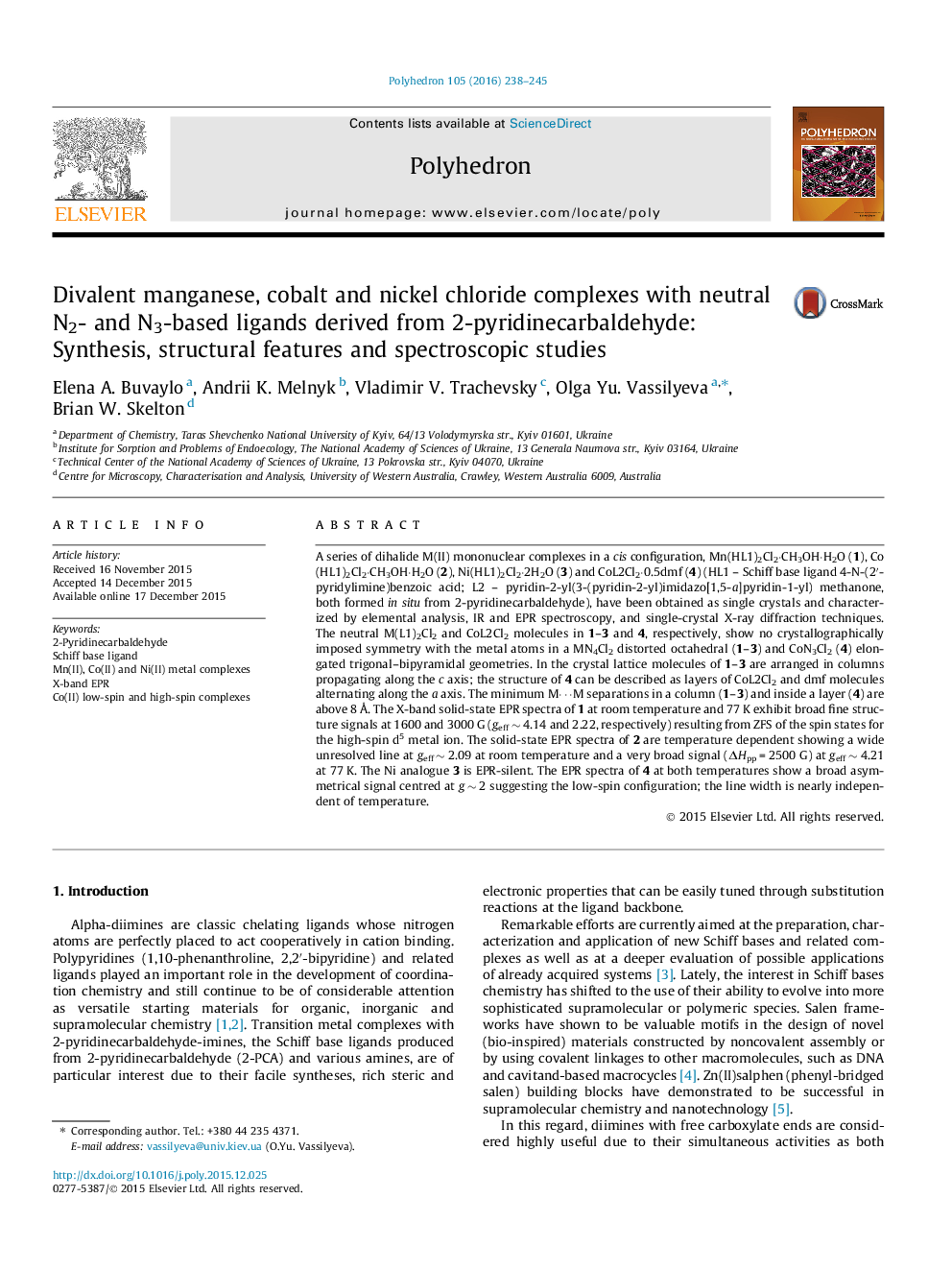| کد مقاله | کد نشریه | سال انتشار | مقاله انگلیسی | نسخه تمام متن |
|---|---|---|---|---|
| 1334310 | 1500235 | 2016 | 8 صفحه PDF | دانلود رایگان |

A series of dihalide M(II) mononuclear complexes in a cis configuration, Mn(HL1)2Cl2·CH3OH·H2O (1), Co(HL1)2Cl2·CH3OH·H2O (2), Ni(HL1)2Cl2·2H2O (3) and CoL2Cl2·0.5dmf (4) (HL1 – Schiff base ligand 4-N-(2′-pyridylimine)benzoic acid; L2 – pyridin-2-yl(3-(pyridin-2-yl)imidazo[1,5-a]pyridin-1-yl) methanone, both formed in situ from 2-pyridinecarbaldehyde), have been obtained as single crystals and characterized by elemental analysis, IR and EPR spectroscopy, and single-crystal X-ray diffraction techniques. The neutral M(L1)2Cl2 and CoL2Cl2 molecules in 1–3 and 4, respectively, show no crystallographically imposed symmetry with the metal atoms in a MN4Cl2 distorted octahedral (1–3) and CoN3Cl2 (4) elongated trigonal–bipyramidal geometries. In the crystal lattice molecules of 1–3 are arranged in columns propagating along the c axis; the structure of 4 can be described as layers of CoL2Cl2 and dmf molecules alternating along the a axis. The minimum M⋯M separations in a column (1–3) and inside a layer (4) are above 8 Å. The X-band solid-state EPR spectra of 1 at room temperature and 77 K exhibit broad fine structure signals at 1600 and 3000 G (geff ∼ 4.14 and 2.22, respectively) resulting from ZFS of the spin states for the high-spin d5 metal ion. The solid-state EPR spectra of 2 are temperature dependent showing a wide unresolved line at geff ∼ 2.09 at room temperature and a very broad signal (ΔHpp = 2500 G) at geff ∼ 4.21 at 77 K. The Ni analogue 3 is EPR-silent. The EPR spectra of 4 at both temperatures show a broad asymmetrical signal centred at g ∼ 2 suggesting the low-spin configuration; the line width is nearly independent of temperature.
The Schiff base ligand bearing a protonated carboxylic group imposes MIIN4Cl2 coordination in M(HL1)2Cl2·Solv (M = Mn, Co, Ni) complexes and serves as a source of 2-pyridinecarbaldehyde to produce heterocyclic methanone ligand L2 in the interaction of HL1 with ammonium salt. Electronic properties of the complexes were probed by EPR spectroscopy.Figure optionsDownload as PowerPoint slide
Journal: Polyhedron - Volume 105, 17 February 2016, Pages 238–245